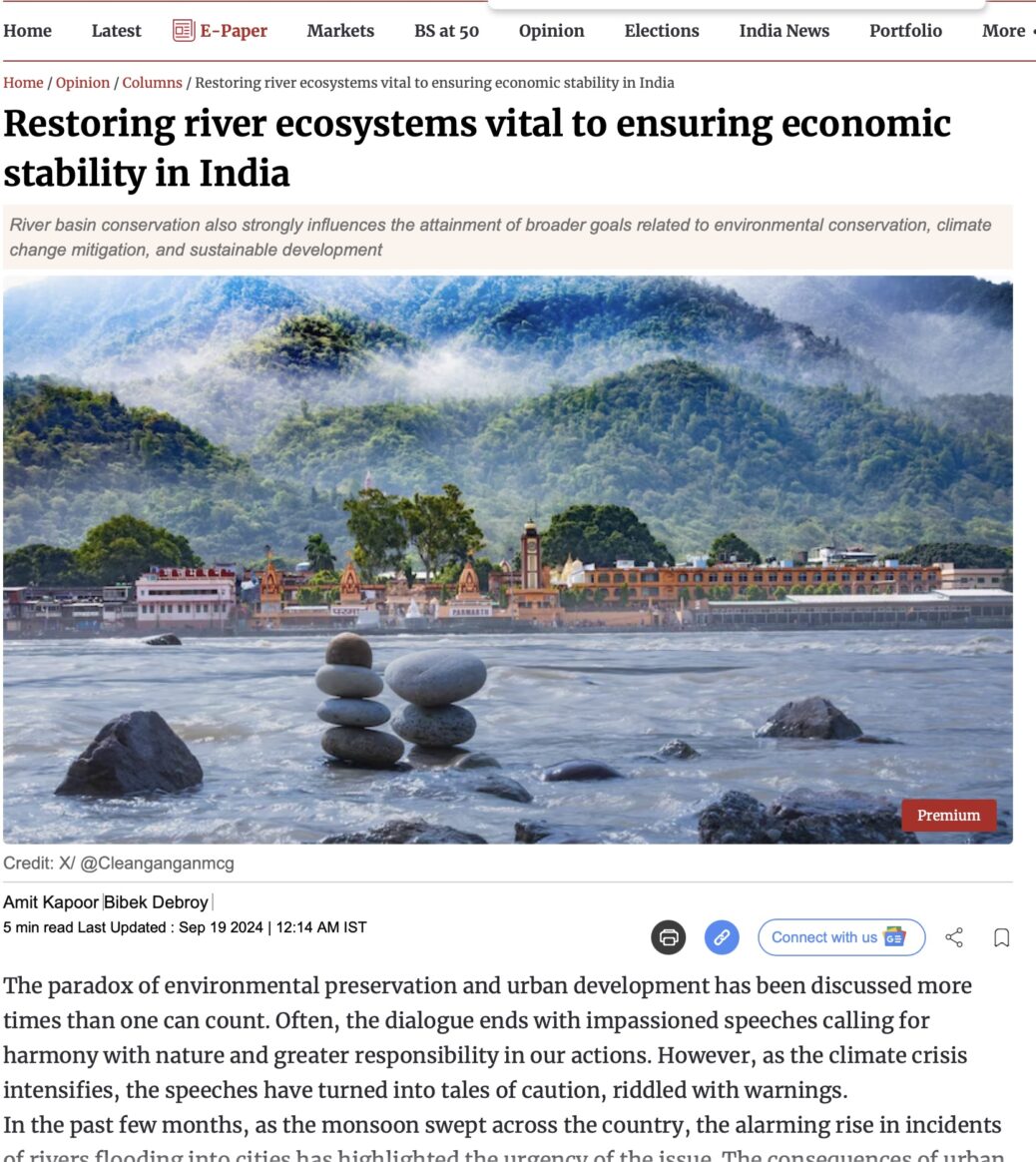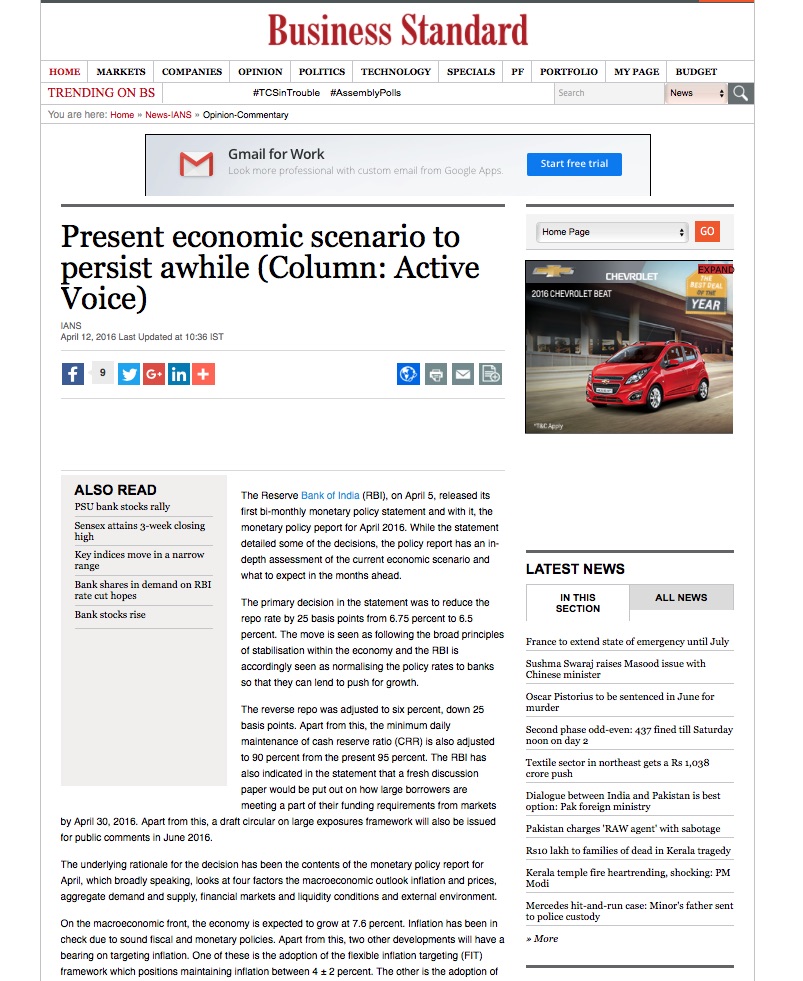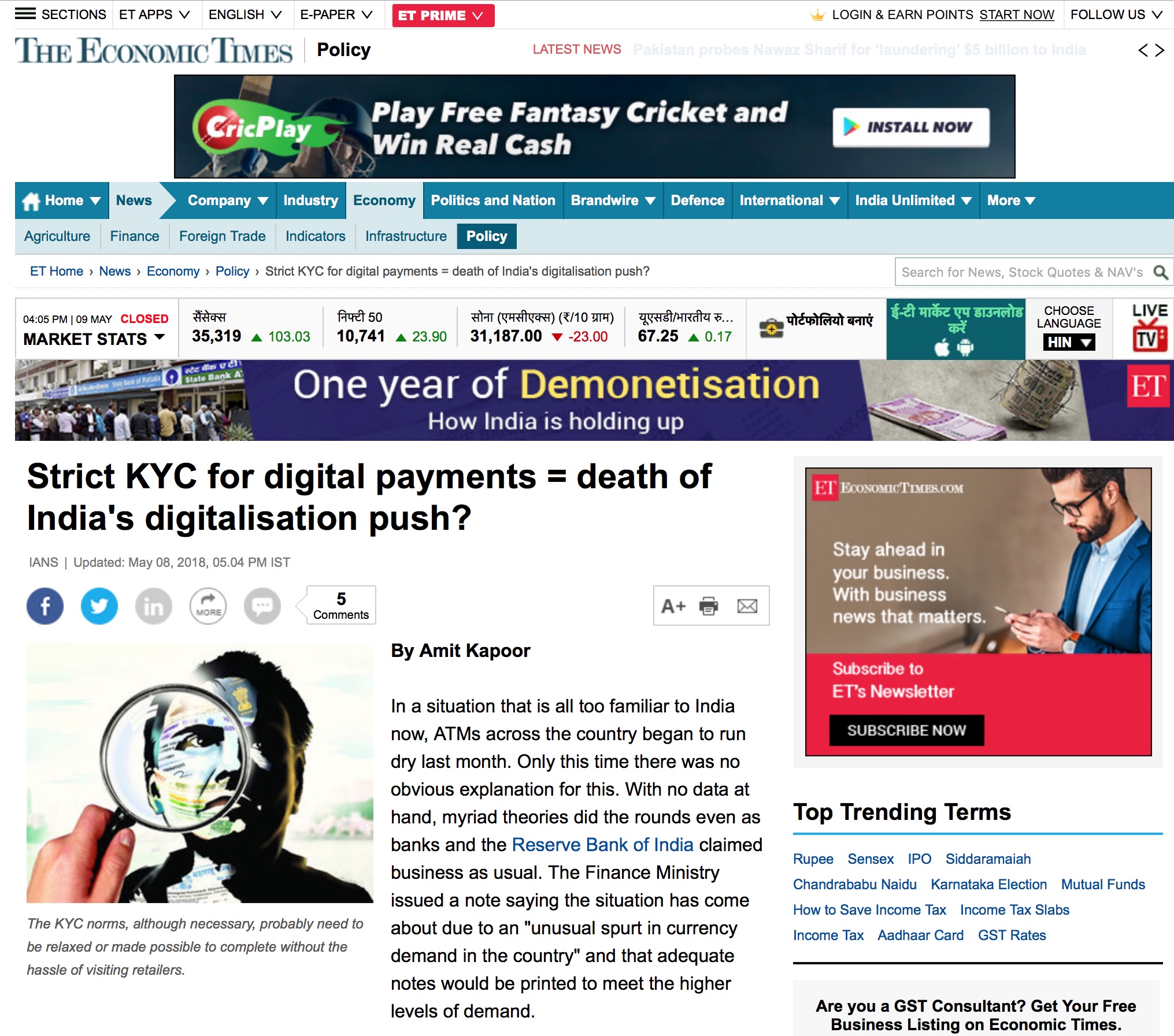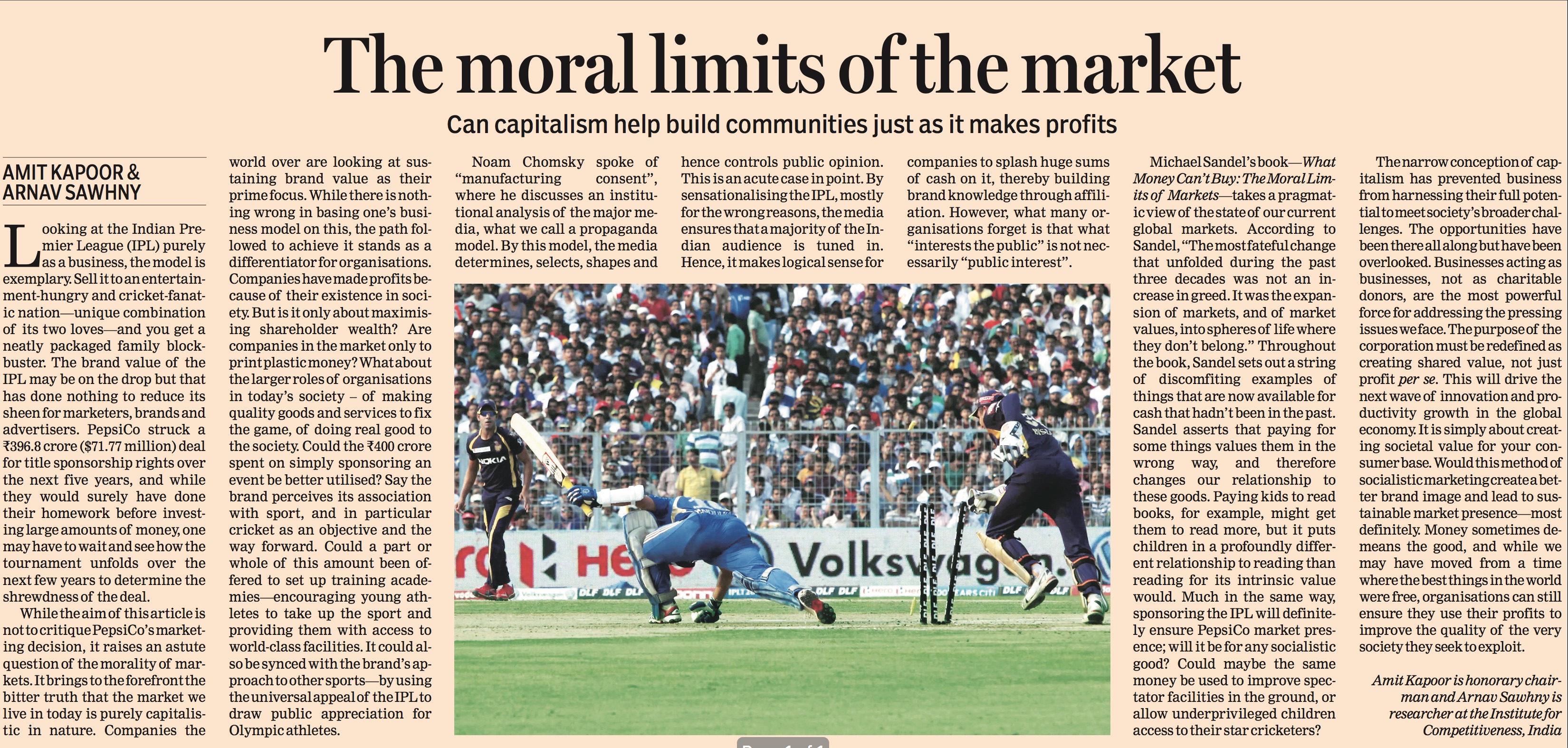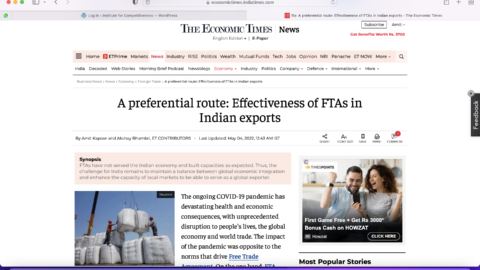Blue Lifelines of Cities – Rivers and Urban Growth in India
The paradox of environmental preservation and urban development has been discussed more times than one can count. Often, the dialogue ends in an impassioned speech calling for harmony with nature and being more responsible towards our actions. However, as the climate crisis intensify, the speeches turn into tales of caution, riddled with warnings. In fact, in the past few months, as monsoons have hit the country, the alarming increase in incidents of rivers flooding into cities has come to light, underscoring the urgency of the issue. The consequences of urban encroachment on rivers are dire, as seen in the recent floods in Vadodara and Vijaywada. In the last month, several parts of Vadodara had drowned, with the water level reportedly rising to 8 to 12 feet of water for three days. This caused massive power outages, issues with network connectivity and, more dangerously, crocodiles and snakes flowing into the residential areas. A significant reason for the situation remained encroachment around the Vishwamitri River, which led to nearly century-old reservoirs – Ajwa and Pratappura – overflowing and flooding the river. Similarly, encroachment over the Budameru Rivulet is considered to be a significant reason behind the recent Vijaywada floods, evoking CM N Chandrababu Naidu to declare “Operation Budameru” to remove encroachment on the rivulet. Going not very far, the National Capital, New Delhi, has been regularly engulfed in floods, with river Yamuna overflowing in the city every monsoon season. As per the Delhi Development Authority’s 2021 Master Plan, river Yamuna’s floodplain in Delhi spanned around 97 square kilometers, accounting for nearly 7% of the city’s area. However, as the Master Plan suggested, encroachment over the river has restricted its flow in the city. In the process of growth and change in urban centers, human settlements and natural ecosystems bear the direct brunt. Such a disruption of river basins, which is important for ecological balance, brings about severe environmental and social consequences.
In 2021, the Ministry of Housing and Urban Affairs released River Centric Urban Planning Guidelines for municipal planning and development authorities to ensure sustainable river management while regulating development along the river. As the urban population rises and cities expand, overuse and exploitation of natural resources, especially rivers, are expected consequences. As pollution load increases and rivers continue to be channelised to accommodate growing urban needs, flood plains are degraded. In 2022, the Central Pollution Control Board came out with a study examining polluted river stretches. The study stated that across all the states and union territories, 603 rivers were reviewed, of which 279 rivers had 311 polluted stretches. Factors like the discharge of untreated waste, illegal construction, and river channelisation through dredging and realigning rivers continuously damage water quality, the aquatic ecosystem, and groundwater.
As the pace of urbanisation increases, patterns of land use transform, leading to changes in river basins. One of the immediate and visible consequences of meddling with the basins of rivers is flooding. Within cities like Mumbai and Delhi, the processes of rapid urbanisation have resulted in riverbank encroachment and the conversion of wetlands and floodplains into residential and commercial use, thereby substantially reducing the capacity of wetlands and floodplains to absorb excess rainwater during monsoon seasons. Another critical dimension of deterioration in river basins is the dwindling freshwater resources. Already considered to be one of the most water-stressed countries in the world, India has 18 per cent of the population but only 4 per cent of the world’s water resources. The rampant over-extraction of water, pollution, and mismanagement of river systems have together raised the alarm about the imminent water crisis. Freshwater ecosystems are dramatically shrinking, further exacerbating the scarcity of water. This depletion has greater ramifications in terms of human populations, biodiversity, and environmental sustainability.
The shrinking and degradation of river ecosystems represent one of the biggest challenges that need national attention. It is imperative that river restoration and reclamation models are mainstreamed in urban design as we prepare our cities to accommodate 50 per cent of the population by 2050. These would include addressing river water dehydration, enhancing the aesthetic value of rivers to increase community awareness, and implementing sustainable drainage systems to improve the overall quality of river water.
River basin conservation also strongly influences the attainment of broader goals related to environmental conservation, climate change mitigation, and sustainable development. Rivers provide freshwater, regulate local climates, create biodiversity hotspots, and underpin agriculture and economic activities. India’s secure environmental and economic future remains jeopardised without concerted efforts to protect and restore river ecosystems. The threats to river basin degradation demand an address on many fronts. On the one hand, they call for more rigorous regulation in urban development and land-use laws to forestall encroachment into natural drainage systems. On the other hand, they contemplate restoring and rehabilitating degraded river ecosystems through reforestation of riverbanks, establishing protected areas in critical watersheds, and using sustainable water management practices. It also effectively raises public awareness by involving communities in developing responsibility for protecting water resources.
The article was published with Business Standard on September 19, 2024

